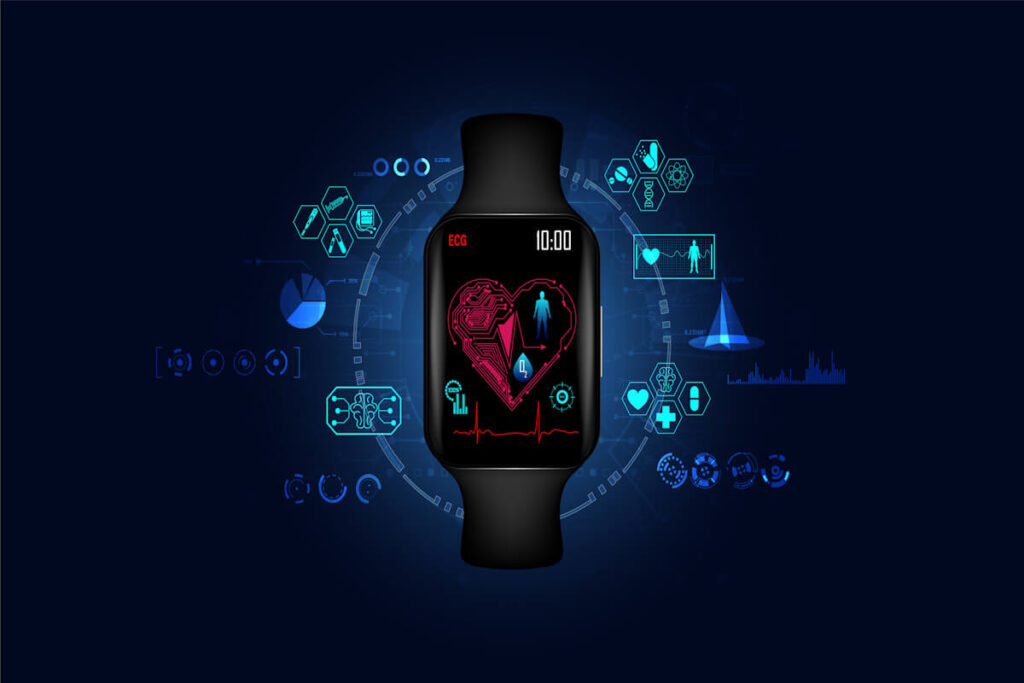In today’s rapidly evolving digital landscape, the integration of wearables and IoT (Internet of Things) technology in healthcare has revolutionized the way healthcare providers deliver patient care and manage health data. By leveraging cross-platform solutions, healthcare organizations can seamlessly connect various devices and systems to streamline data collection, analysis, and communication, ultimately improving patient outcomes and driving operational efficiency.
The Rise of Wearable Technology in Healthcare
Wearable devices, such as smartwatches, fitness trackers, and medical sensors, have become increasingly popular among consumers for tracking fitness metrics, monitoring health conditions, and promoting overall well-being. In the healthcare industry, wearables have opened up new possibilities for remote patient monitoring, real-time health tracking, and personalized care delivery.
By integrating wearable technology with IoT-enabled platforms, healthcare providers can access real-time data insights, monitor patient health remotely, and intervene proactively in case of emergencies. This seamless connectivity between wearables and IoT devices enables healthcare organizations to deliver more personalized and efficient care to patients, regardless of their location.
Some key points to consider in the rise of wearable technology in healthcare include:
– Wearable devices allow for continuous monitoring of vital signs and health metrics.
– The integration of wearables with IoT platforms enables healthcare providers to make data-driven decisions in real time.
– Wearables promote patient engagement and empowerment by allowing individuals to actively participate in their health management.
Benefits of Cross-Platform Integration in Healthcare
Cross-platform integration in healthcare refers to the seamless connection and interoperability between various devices, systems, and applications to streamline data flow and communication. By integrating wearables and IoT devices across different platforms, healthcare organizations can achieve the following benefits:
- Improved Data Accuracy: Cross-platform integration ensures that data collected from wearables and IoT devices is accurate, reliable, and consistent across different systems.
- Enhanced Patient Monitoring: Healthcare providers can monitor patient health in real time, track vital signs, and detect any abnormalities or changes promptly.
- Efficient Care Coordination: By connecting wearables and IoT devices to a centralized platform, healthcare teams can easily collaborate, share information, and coordinate care plans for patients.
- Cost Savings: Integrated systems reduce duplication of efforts, streamline workflows, and optimize resource allocation, leading to cost savings for healthcare organizations.
Leveraging Wearable Integration and IoT for Connected Healthcare Solutions
To fully leverage the potential of wearable integration and IoT in healthcare, organizations must adopt a holistic approach to connected solutions. This involves integrating wearables and IoT devices with electronic health records (EHR) systems, telehealth platforms, and other healthcare technologies to create a seamless ecosystem for data exchange, analysis, and communication.
By implementing cross-platform solutions for wearable integration and IoT in healthcare, organizations can achieve the following outcomes:
- Real-Time Health Monitoring: Healthcare providers can monitor patient health remotely, track disease progression, and intervene in case of emergencies.
- Personalized Care Delivery: Wearable data insights enable healthcare teams to tailor treatment plans, medication dosages, and lifestyle recommendations to individual patient needs.
- Preventive Care Strategies: By analyzing wearable data trends, healthcare organizations can identify health risks, predict potential complications, and implement preventive care strategies proactively.
- Patient Engagement and Empowerment: Wearables and IoT devices encourage patients to take an active role in their health management, track their progress, and make informed decisions about their care.
Challenges and Considerations for Wearable Integration in Healthcare
Despite the numerous benefits of wearable integration and IoT in healthcare, organizations may face several challenges and considerations when implementing connected solutions. Some of the key challenges include:
- Data Security and Privacy: Protecting sensitive health data transmitted through wearables and IoT devices is crucial to maintain patient confidentiality and comply with regulatory requirements.
- Interoperability Issues: Ensuring seamless communication and data exchange between different wearables, IoT devices, and healthcare systems may require standardization and interoperability protocols.
- Regulatory Compliance: Healthcare organizations must adhere to strict regulatory guidelines, such as HIPAA, GDPR, and FDA regulations, when collecting, storing, and transmitting patient health data.
Conclusion
The integration of wearables and IoT technology in healthcare has the potential to transform patient care delivery, improve health outcomes, and drive operational efficiency. By leveraging cross-platform solutions for connected healthcare, organizations can unlock the full benefits of wearable integration and IoT, enabling real-time health monitoring, personalized care delivery, and preventive care strategies. Despite the challenges and considerations involved, the future of healthcare lies in embracing wearable technology and IoT innovations to create a more connected and patient-centric healthcare ecosystem.
FAQs:
What is the benefit of integrating wearables and IoT technology in healthcare?
By integrating wearables and IoT technology in healthcare, healthcare providers can access real-time data insights, monitor patient health remotely, and intervene proactively in case of emergencies, ultimately improving patient outcomes and driving operational efficiency.
How can cross-platform integration improve patient care delivery?
Cross-platform integration in healthcare ensures improved data accuracy, enhanced patient monitoring in real-time, efficient care coordination among healthcare teams, and cost savings through streamlined workflows and optimized resource allocation.
What types of wearable devices are commonly used in healthcare settings?
Wearable devices commonly used in healthcare settings include smartwatches, fitness trackers, and medical sensors, which enable remote patient monitoring, real-time health tracking, and personalized care delivery.
What are some benefits of integrating wearables and IoT devices across different platforms in healthcare?
Some benefits of integrating wearables and IoT devices across different platforms in healthcare include improved data accuracy, enhanced patient monitoring, efficient care coordination, and cost savings through streamlined workflows and optimized resource allocation.
